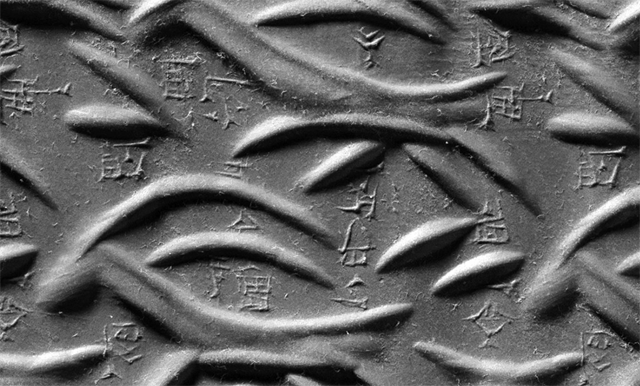I’ve been in New York since last Tuesday and have interacted with so many individual images that I appreciate not having a photographic memory. Here are three random grabs from the river.
First is a glorious kimono included in the Metropolitan Museum of Art’s exhibit Birds in the Arts of Japan. The fabric technique — dye- and pigment-patterned silk crepe — produces stunning results. I was set to point out that this kimono, made in 1942 Japan, was not made for a Milquetoast. Macho warrior I surmised. It pays to read more thoroughly — this was worn by a bride at her wedding. You wonder what became of her — and this — in the tumultuous ensuing years.
Kimono with Birds in Flight via the Metropolitan Museum of Art
same kimono, back view
Kimono detail
I won’t recommend this exhibit — maybe I’m spoiled by the impressive Japanese holdings I grew up with on the west coast. It does have some marvelous pieces.
_________________________________________________________
MoMA has this arresting German Expressionist canvas by Ernst Ludwig Kirchner. The Fifth floor’s Gallery 14 is small. The Kirchner cohabits both oddly and intriguingly with some beautiful Kandinskys.
Street, Dresden by Ernst Ludwig Kirchner, 1908 (reworked 1919) [and color altered by me 2013] via MoMA*
* Note: I probably exceeded the speed limit when I toyed with the vibrance and saturation of this in Photoshop — but versions I found online lied about the color wallop. MoMA says Kirchner has violently heightened the colors of this urban scene but their photo lacks the head-swiveling force of the big painting.
In the spirit of fair play, here’s MoMA’s rendition. Which gives you none of the reason I had to sit on a bench and bask in the glow.
Street, Dresden by Ernst Ludwig Kirchner unaltered MoMA image
_________________________________________________________
Third stand-out for me was at the Morgan Library — its extensive display of ancient cylinder seals. You see the actual miniature seal and its impression, plus an excellent enlargement showing details.
Pattern of Two Running Goats, One Above the Other, cylinder seal and impression. Mesopotamia, Early Dynastic I period (ca. 2900–2750 B.C.). Cylinder measures 42 x 10.5 mm (1.7 x 0.4 in)
Enlargement of the above. Note the impossibly fine scale of the cuneiform inscription.
Cuneiform was a precursor of written language as we know it — from it flowed Omar Khayyam, Shakespeare, Stephen Hawking enlightening laymen. Look at the dexterity in this cuneiform carving and compare it to the cruder markings of the rhythmic running goats. Are they from the same hand — or were these separate trades? Certainly using different tools, different force.
There is modern art that concerns itself with the meaningful play of foreground vs background. Which information can you read in the impression above? Not the streaming goat shapes, goats, at the same time as making sense of the cuneiform inscriptions. Your brain must toggle between them. James Rosenquist notably plays with this.
James Rosenquist in his studio via Tampa Bay Times
___________________________________________________
I’ll post more links as I take the train back home on Thursday. A ragged bouquet of the multitude of things one encounters on a 10-day trip to a great city.









